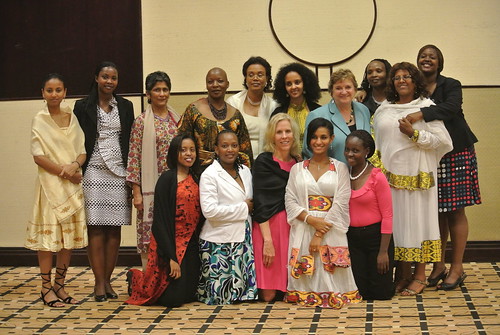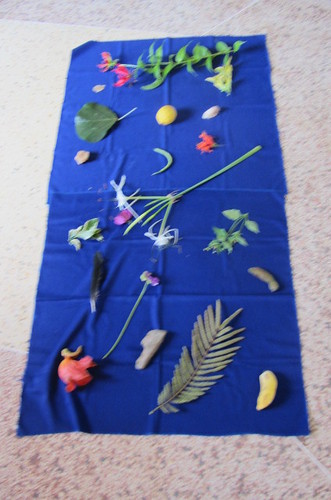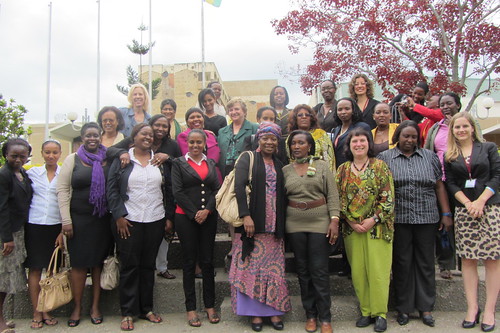
For the past ten days, I’ve been in Rwanda, Africa. I was honored to be a trainer as part of the launch of the ACE Leaders Project, a program developed by the Institute of International Education Sub-Saharan Regional Office and supported by the Packard Foundation. The project is under the visionary leadership of Cheryl Francisconi who is the director of IIE’s office in Addis Ababa in Ethiopia and has vast expertise in developing, designing, and implementing transformative leadership programs for several decades.
The project mobilizes leading women’s organizations and key stakeholders in four countries in Africa – Rwanda, Kenya, Ethiopia, and Uganda to develop and launch a Women’s Leadership program and network. The organizations have extensive experience delivering leadership programs, especially for young women and experience advocating for women’s issues, including reproductive health. The group will working together over the next three years, meeting regularly face-to-face in the different countries as well as work together online.
In addition to working with Cheryl, I was also honored to work with master trainer Kalyani Menon-Sen, an International expert in Women’s Rights and Gender Equity. My role was to deliver components of the Networked NGO curriculum – sessions on network mapping, challenges assumptions about networked ways of working, as well as training on how to use the online collaboration platform for their together moving forward. My sessions were integrated into the various leadership, visioning process for women’s rights, curriculum development, and evaluation methods modules throughout the week as networked and social media skills were not the main focus.
The design for this project was very different than my accustomed way of designing and delivering the Networked NGO trainings and social media skills. My experience so far has been to develop curriculum – mostly focused on technology that is adapted in different countries by local organizations. This design was a participatory process and was intended to provide an opportunity for deep reflective process. I have read a lot about these methods, but you cannot really under it until you experience it. Needless to say, I learned a lot!

Most of the training days took place in rural Rwanda on Lake Muhazi – which was a beautiful place. Internet connectivity in this very rural area was a challenge – which is why the last few days of the training sessions were held in Kigali so participants could get some hands-on practice.
I modeled a lot of different methods for doing “digital documentation” using a digital camera, a flip camera, PPT, and word documents – that could be loaded on a USB stick for participants to take away with them as well as a private wiki once we had Internet access. This was a incredible opportunity to focus on the documentation side – without feeling rushed to get everything online.
Here’s a few facilitation techniques that I learned from documenting the session.

Cheryl lead two “transfer-in” exercises that are essential for a group to get to know each other and build trust. We gathered in a circle and were asked to pick an object from nature that Cheryl had collected from Lake Muhazi. We were asked to reflect on how the objective represents Women’s Leadership and to find a partner to discuss our observations and get to know each other.

I had an opportunity to meet Ms Kathambi Kinoti from the Young Women’s Leadership Institute in Kenya. She selected an orange flower from the “nadiflame” tree because to her women who are leaders stand out miles away – just like the orange flowers on this tree. She shared examples of women leaders in Kenya. When we came back to the circle, we had to introduce each other and the other person’s object.
The second exercise was done in small groups and a report the whole group answering the questions, “What are your hopes and fears for the program?” I learned later from Cheryl that she has conducted this exercise for many leadership programs throughout Africa and had learned it from her mentor, Birgitt Williams, who is an international expert in holistic leadership and design of participatory programs.
Kalyani lead a session on visioning social transformation for gender equality and women’s rights. The exercise is called “The world we want to see” and is 3-step exercise where participants use pictures, not words in order to push people to think in concrete terms rather than fall back on vague generalisations and familiar jargon. The exercise started with having each organization draw a circle and pictures inside of the circle that represented problems and challenges or major barriers to gender equity in their country. The drawings were placed on the walls and participants got to view them.
The next step was for participants to draw another circle draw another big circle with pictures representing how the world might change for the positive. The two worlds were placed side-by-side and participants were asked to draw arrows and label the interventions. Participants debriefed by walking around. Kalyani lead a session in plenary, making observations on the representations and the key point that organizations working on these issues need to be connected — working in a way that I would describe how networked nonprofits work.
Fish Bowl Exericse

Kalyani also facilitated a participatory curriculum development process using different techniques. The photo above shows the “Fish Bowl” technique. I’ve only observed fish bowls in larger sessions, but this was done for a small group of approximately 20. A table of four people were seated at the table and given the task to brainstorm different concepts for the curriculum. The rest of the group observed, but if they wanted to participate could tap the shoulder of anyone seated and join the table.
I facilitated a session that introduced networks, networking, and the Networked NGO. I facilitated a mini-world cafe session where participants reacted to different statements about the use of social media and networked approaches – that was about challenging assumptions. For many reasons, social media is not at the core for many of these NGOS – and it was important to discuss.
Field Trips and Real World Experience

The training also incorporated “Field Trips” visits to bring the “real world” into the learning. We visited the Genocide Memorial (I’ve written a post about this for tomorrow) and visited with Women Leaders in the Rwanda Parliament. Rwanda leads the world with the highest percentage of women in high level positions. Much as been written about the impact of more women in Parliament. Participants had an opportunity to ask questions and hear directly from Women in the Rwanda Parliament. The meeting and visit to the Genocide Memorial was used as a starting point for a reflective discussion about women’s leadership.
I came away from this training having learned an enormous amount about new ways of delivering training, the African context for using social media and networked approaches, and of course, connecting with some amazing women leaders and their ngos in the region.
